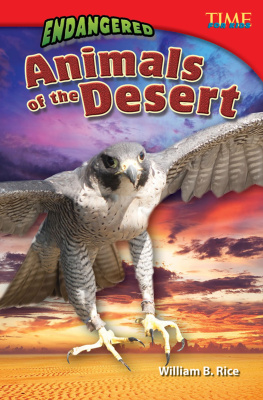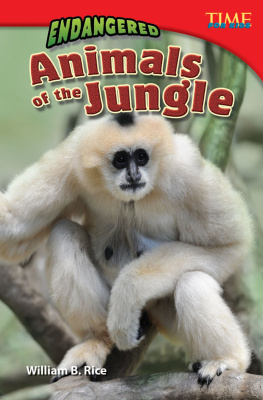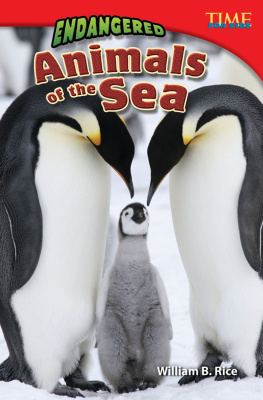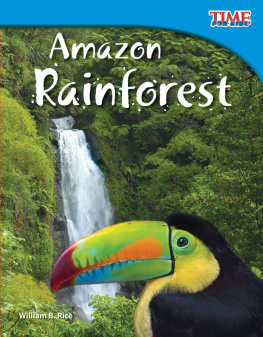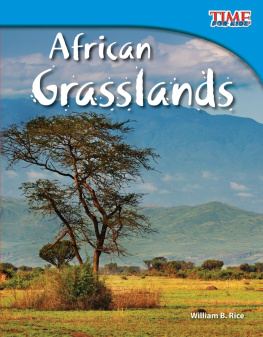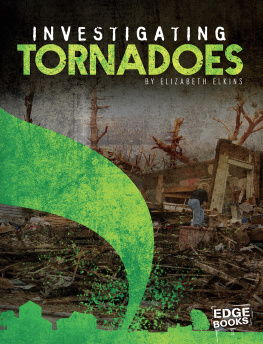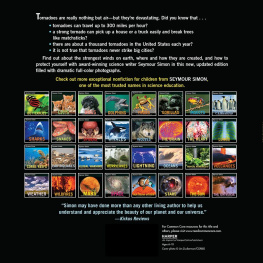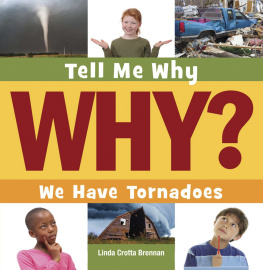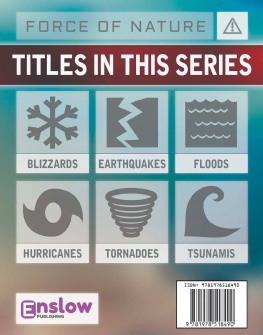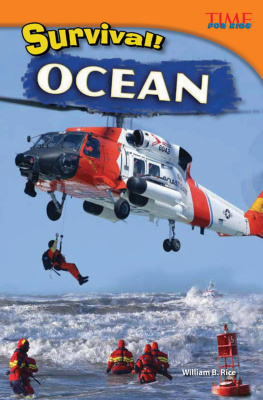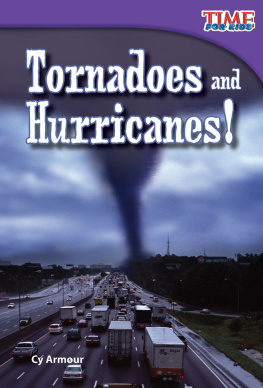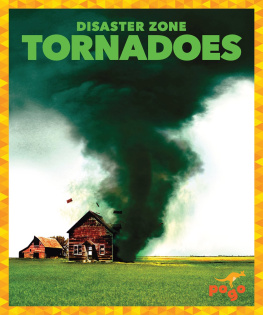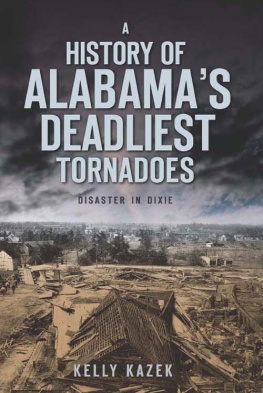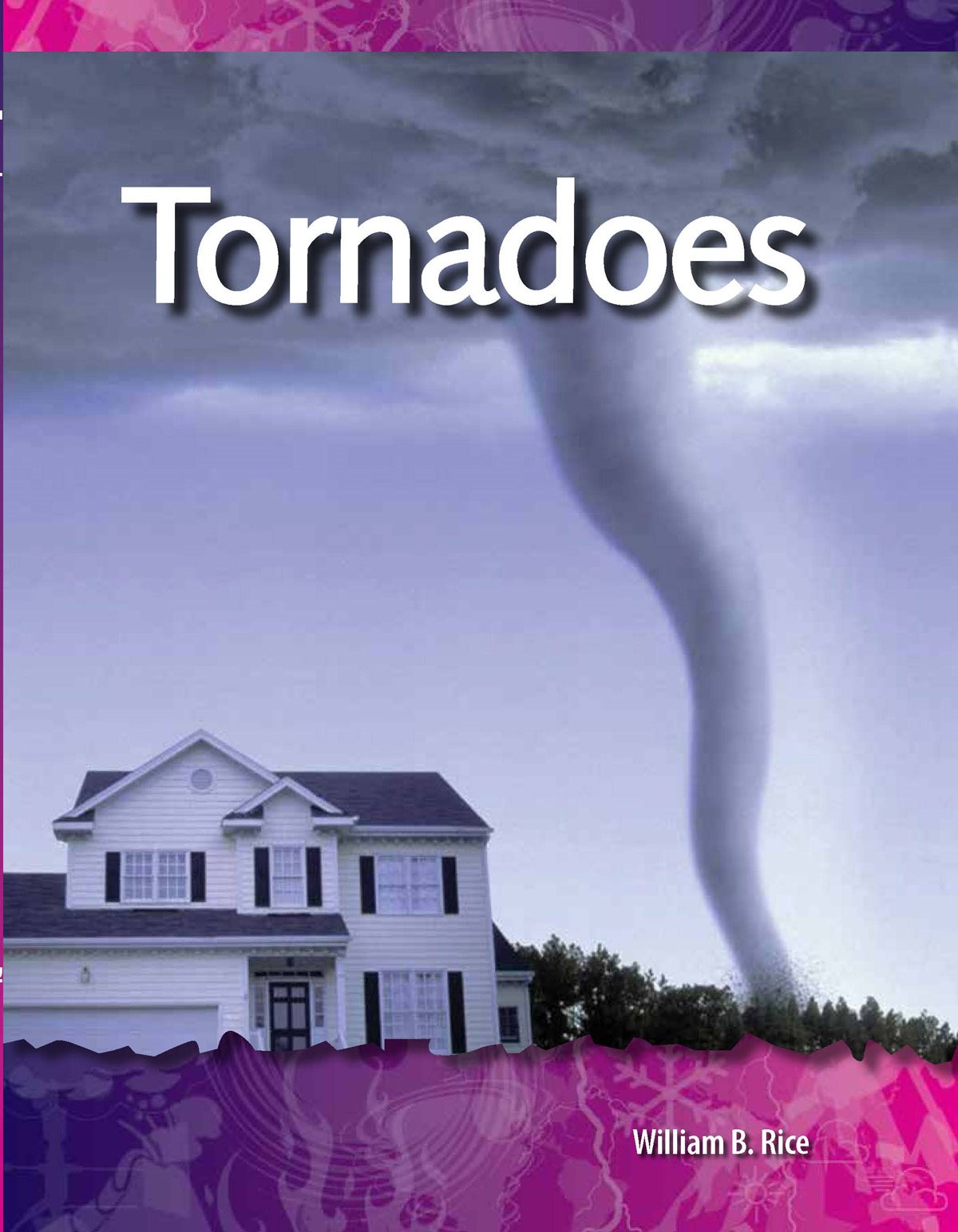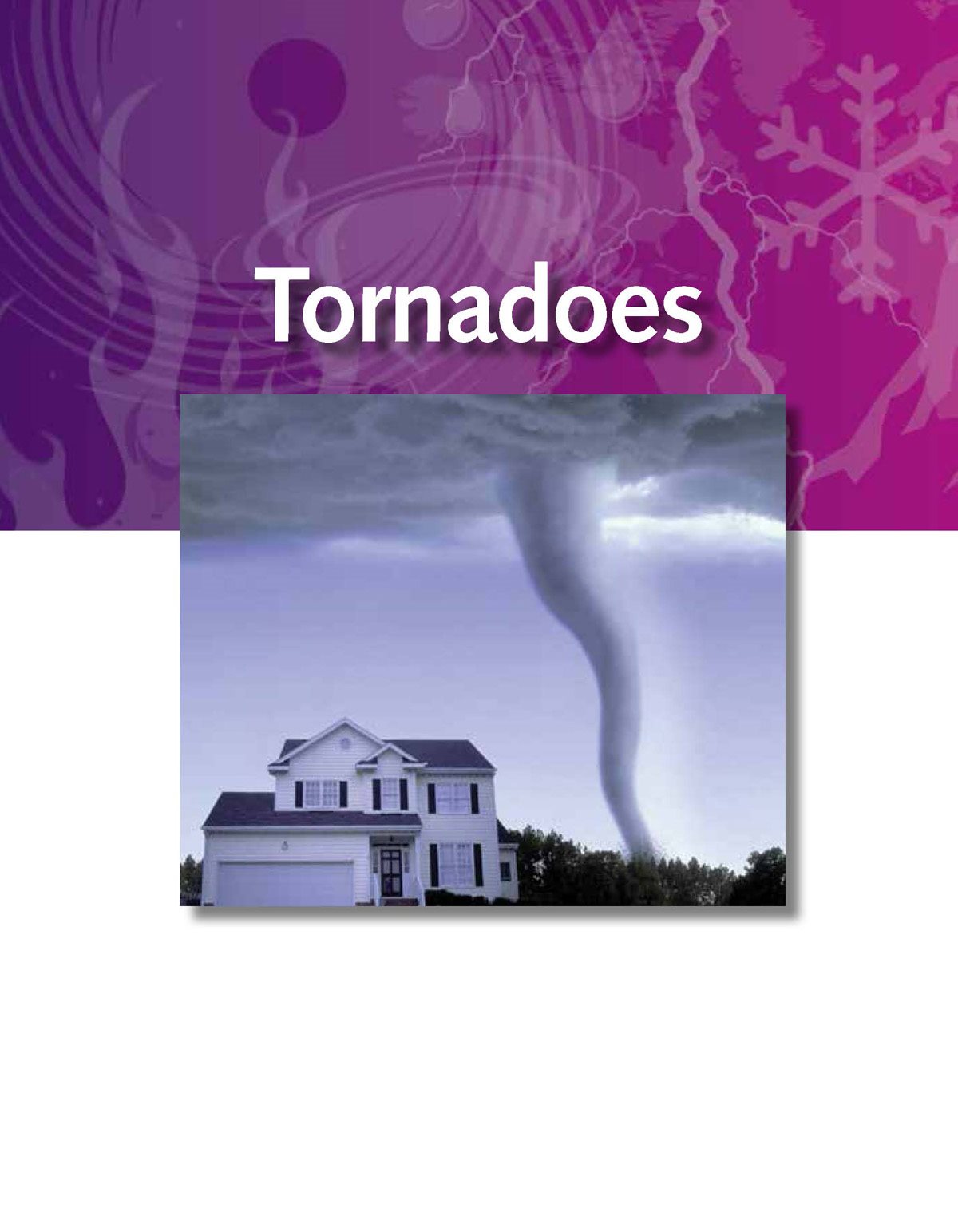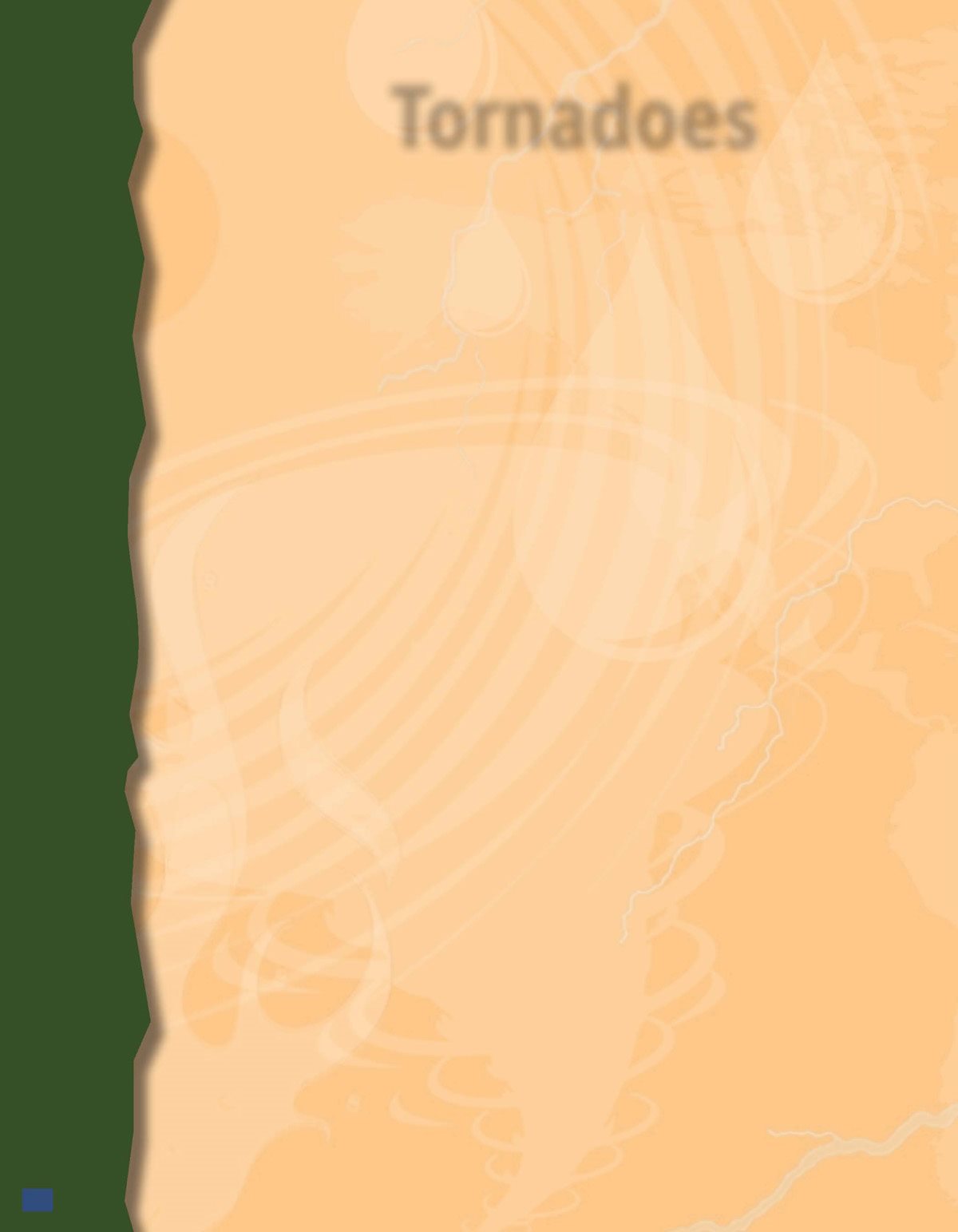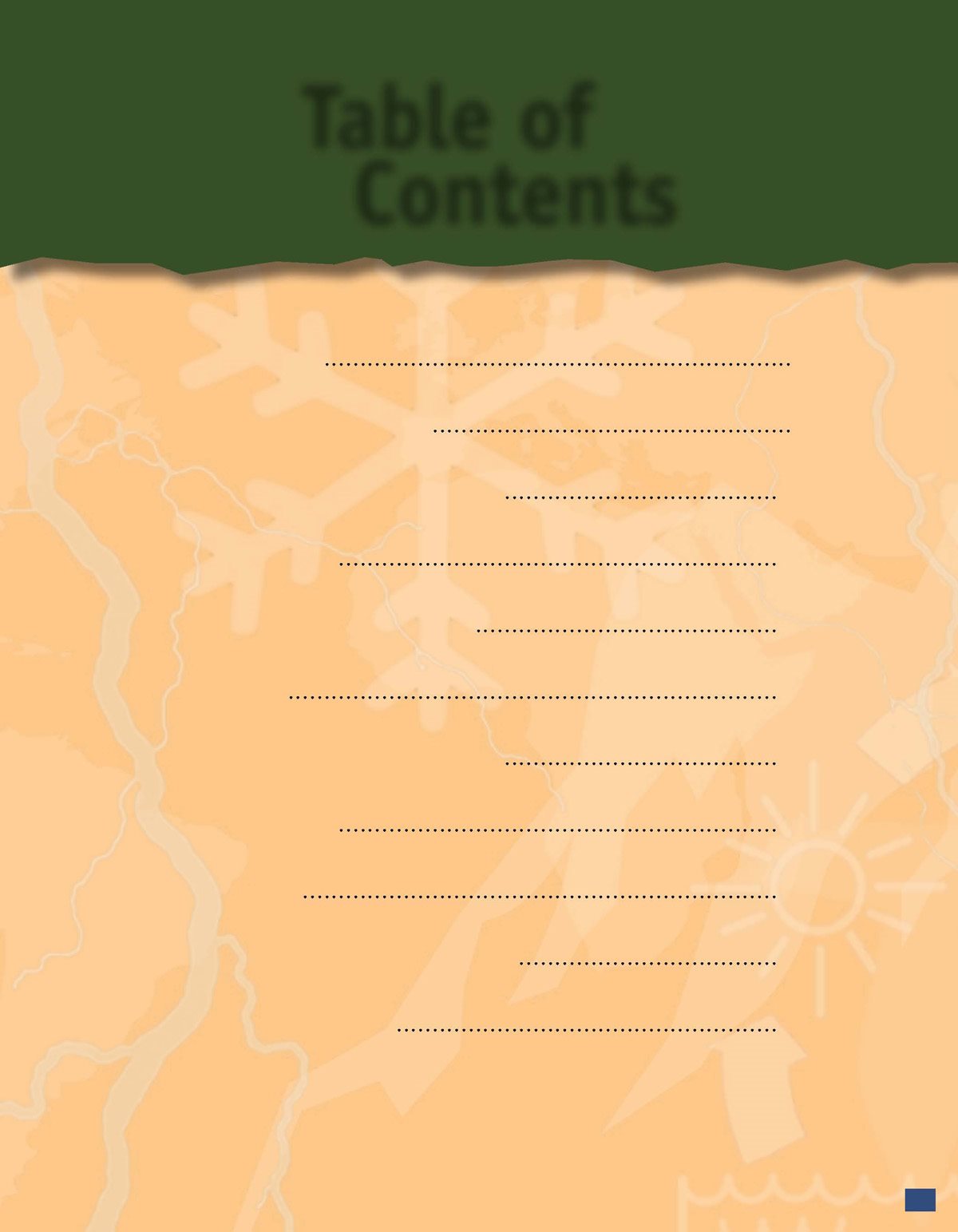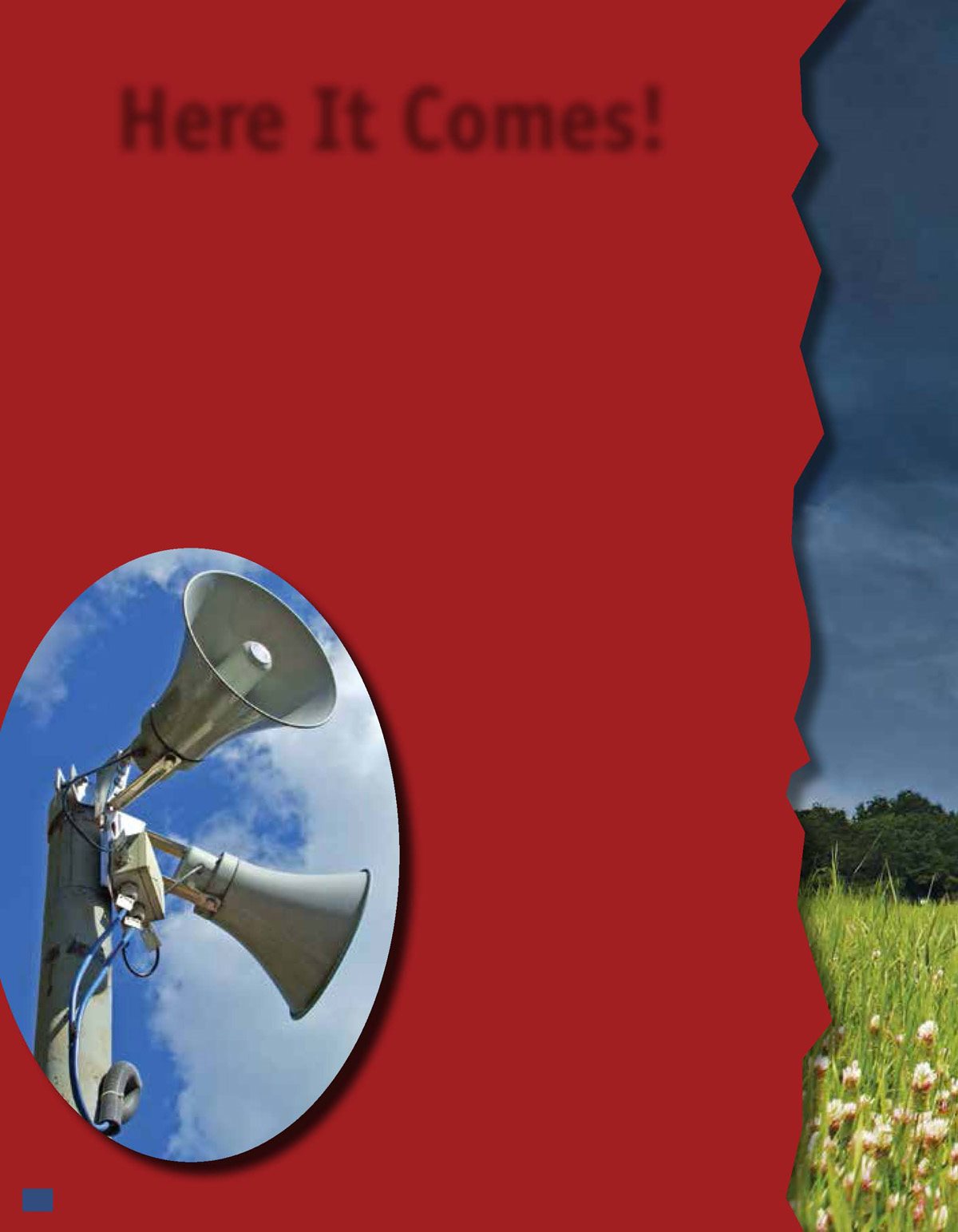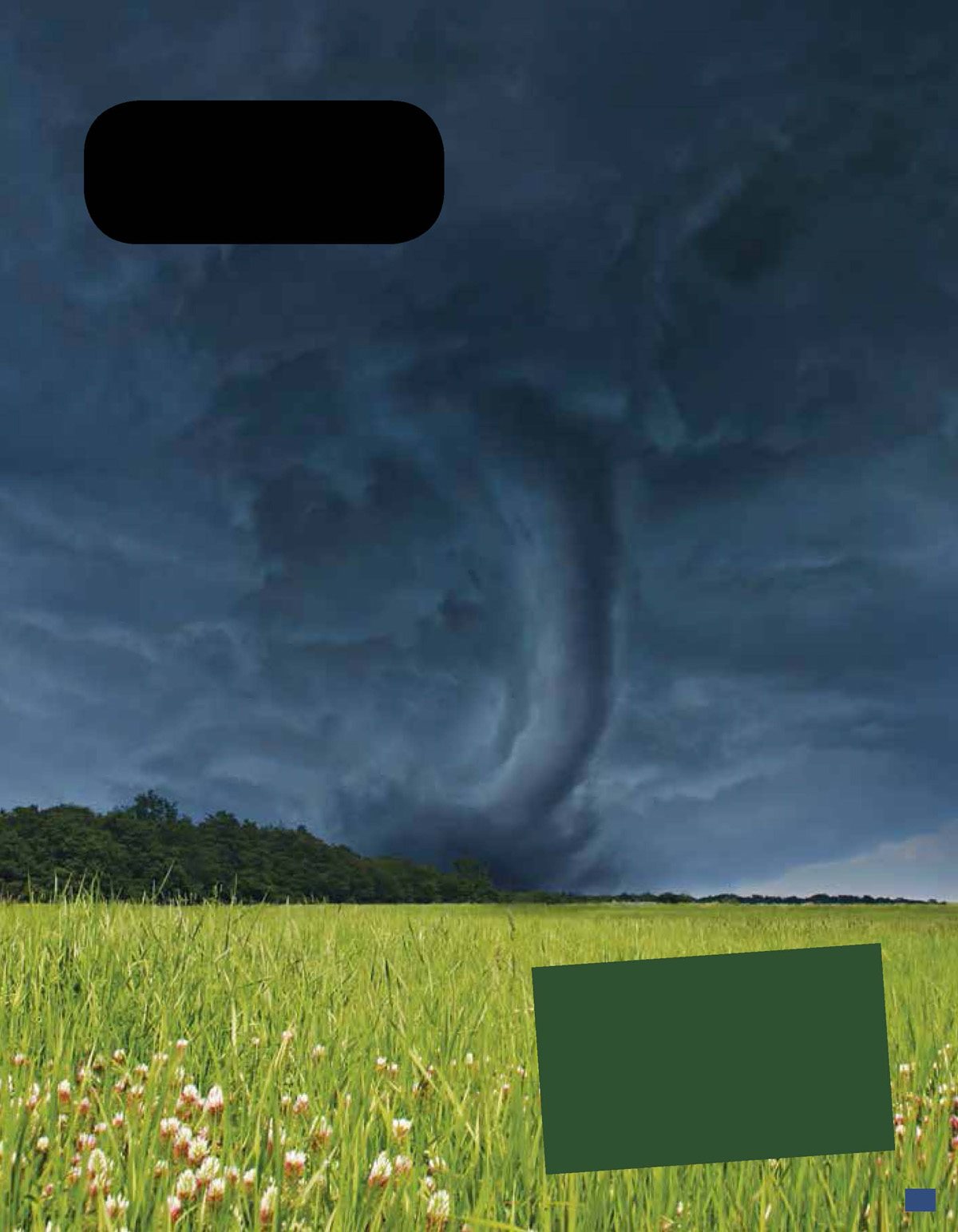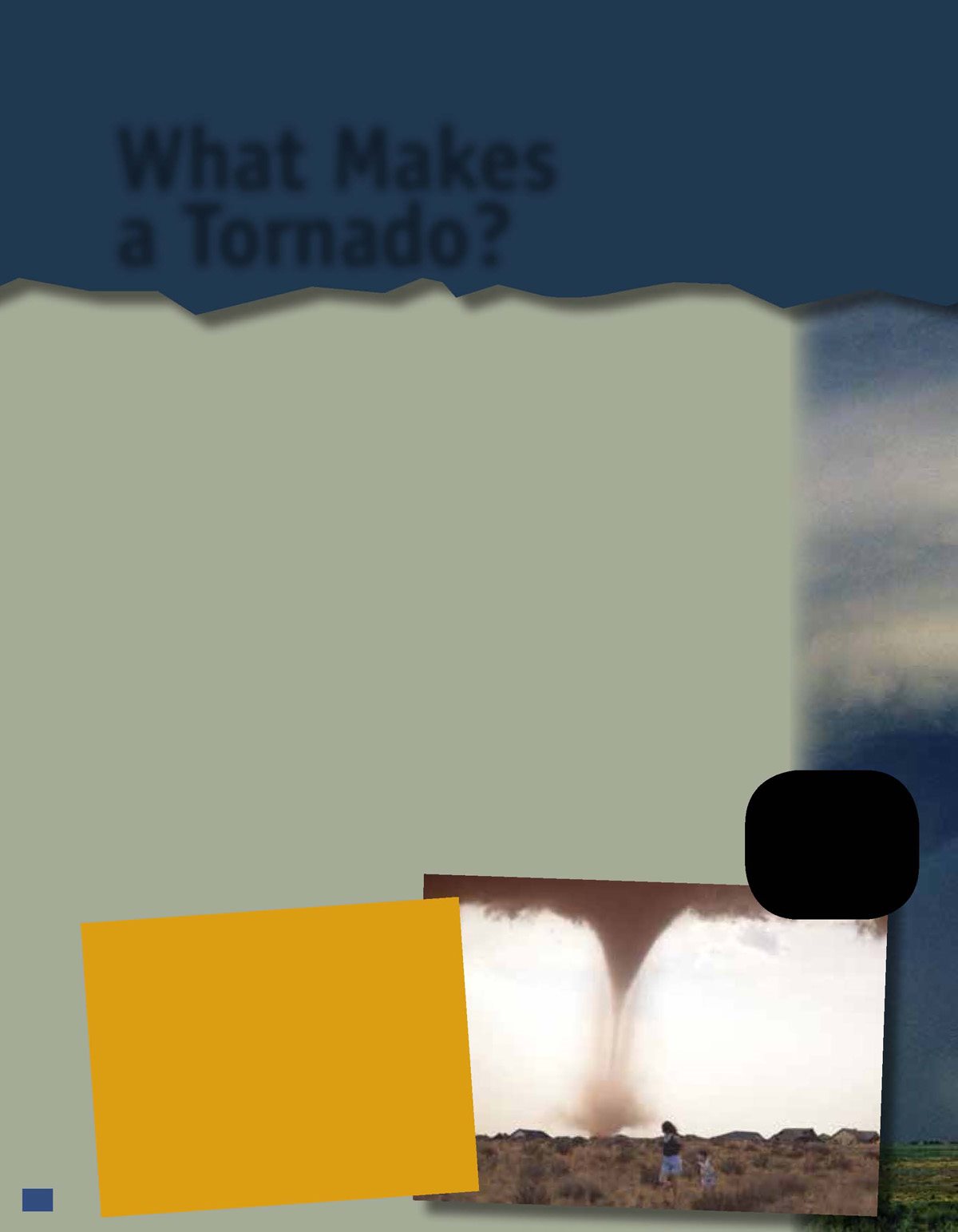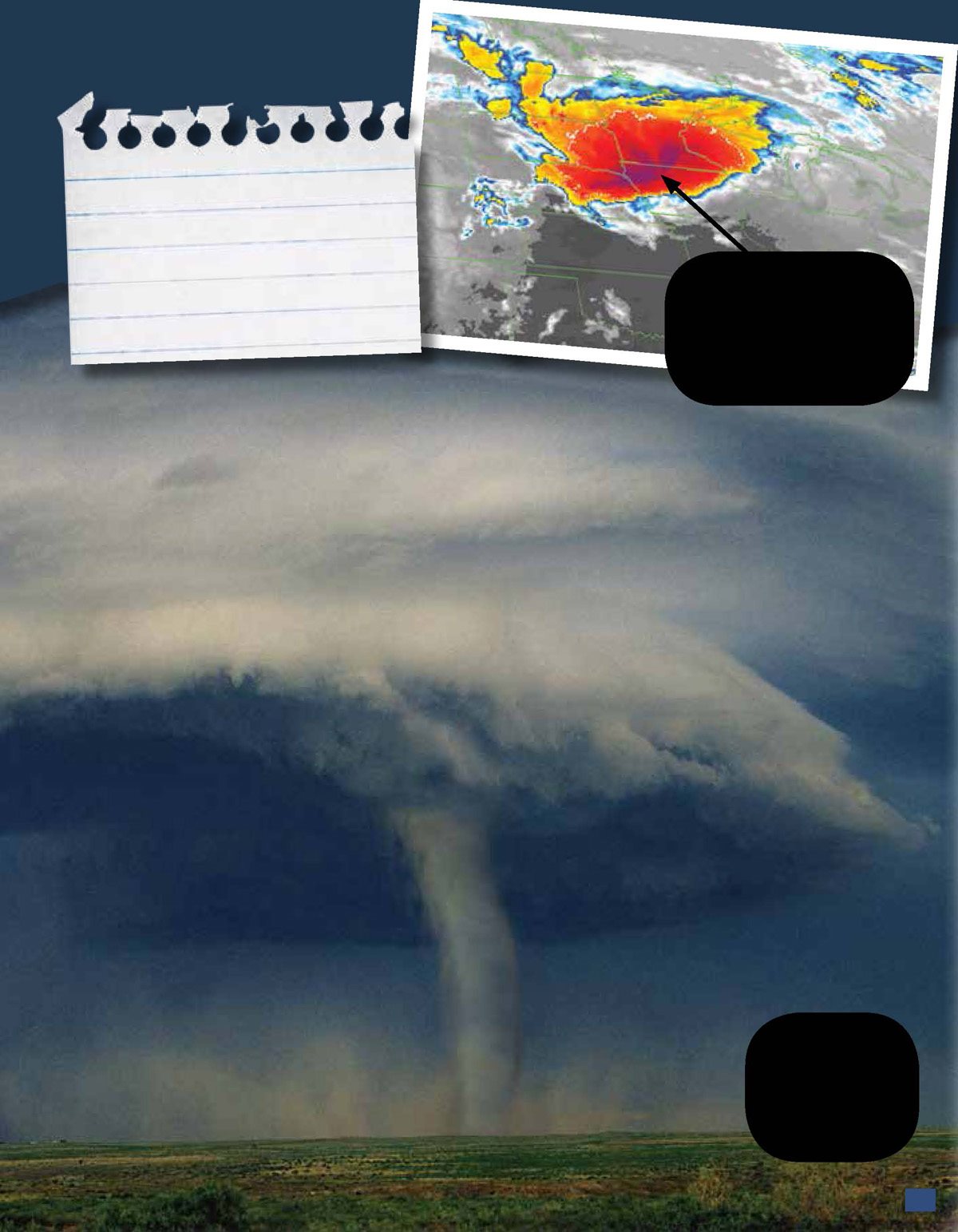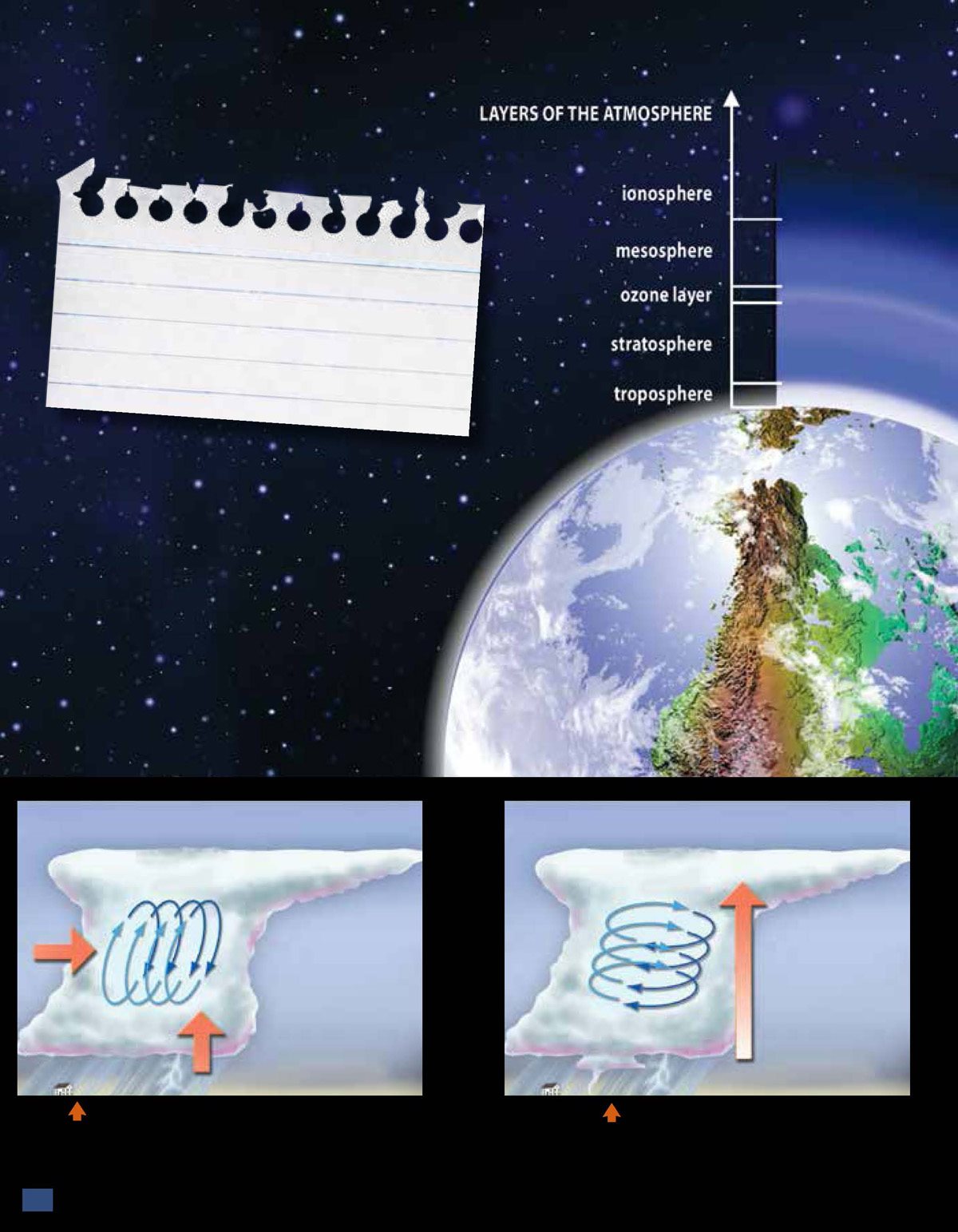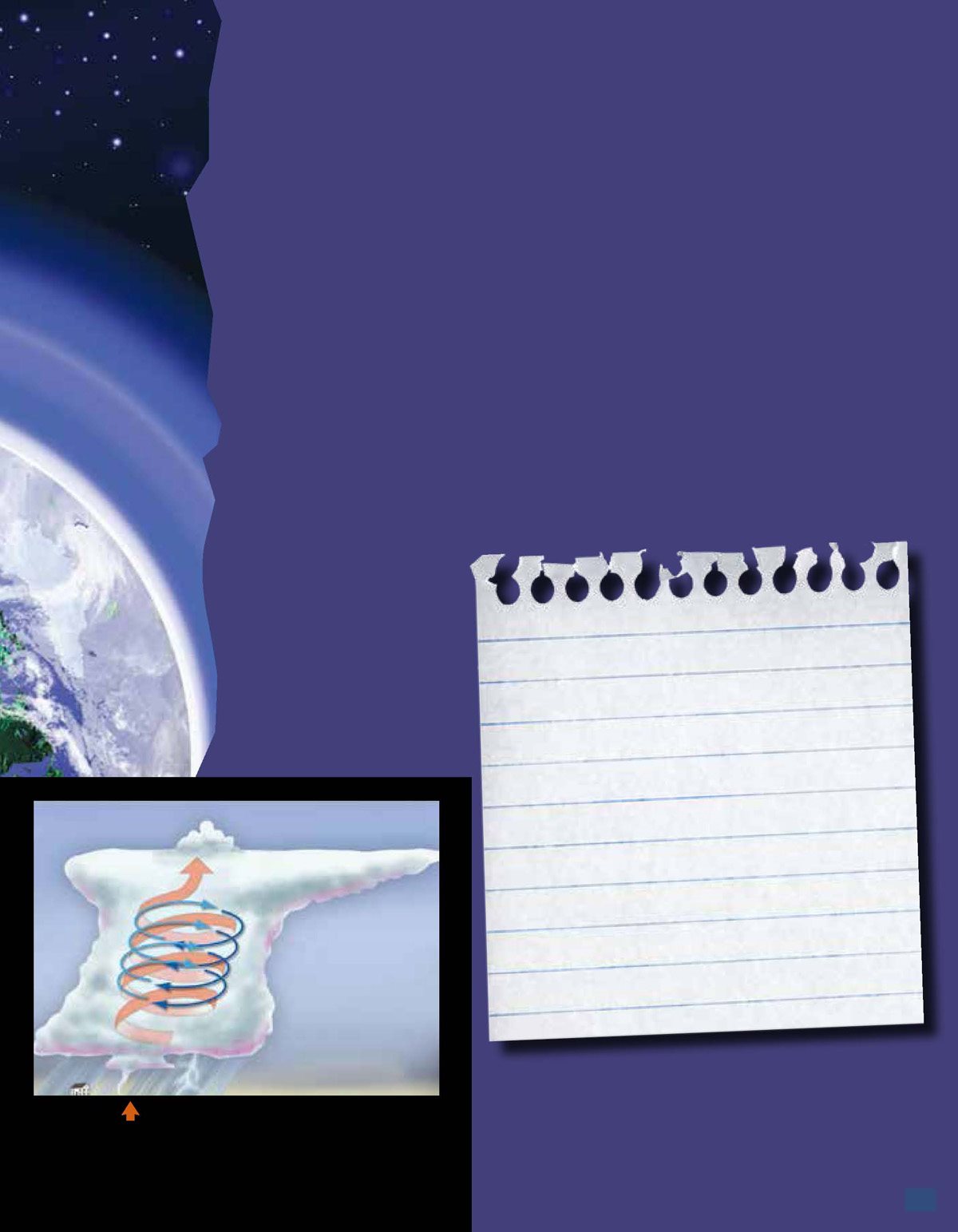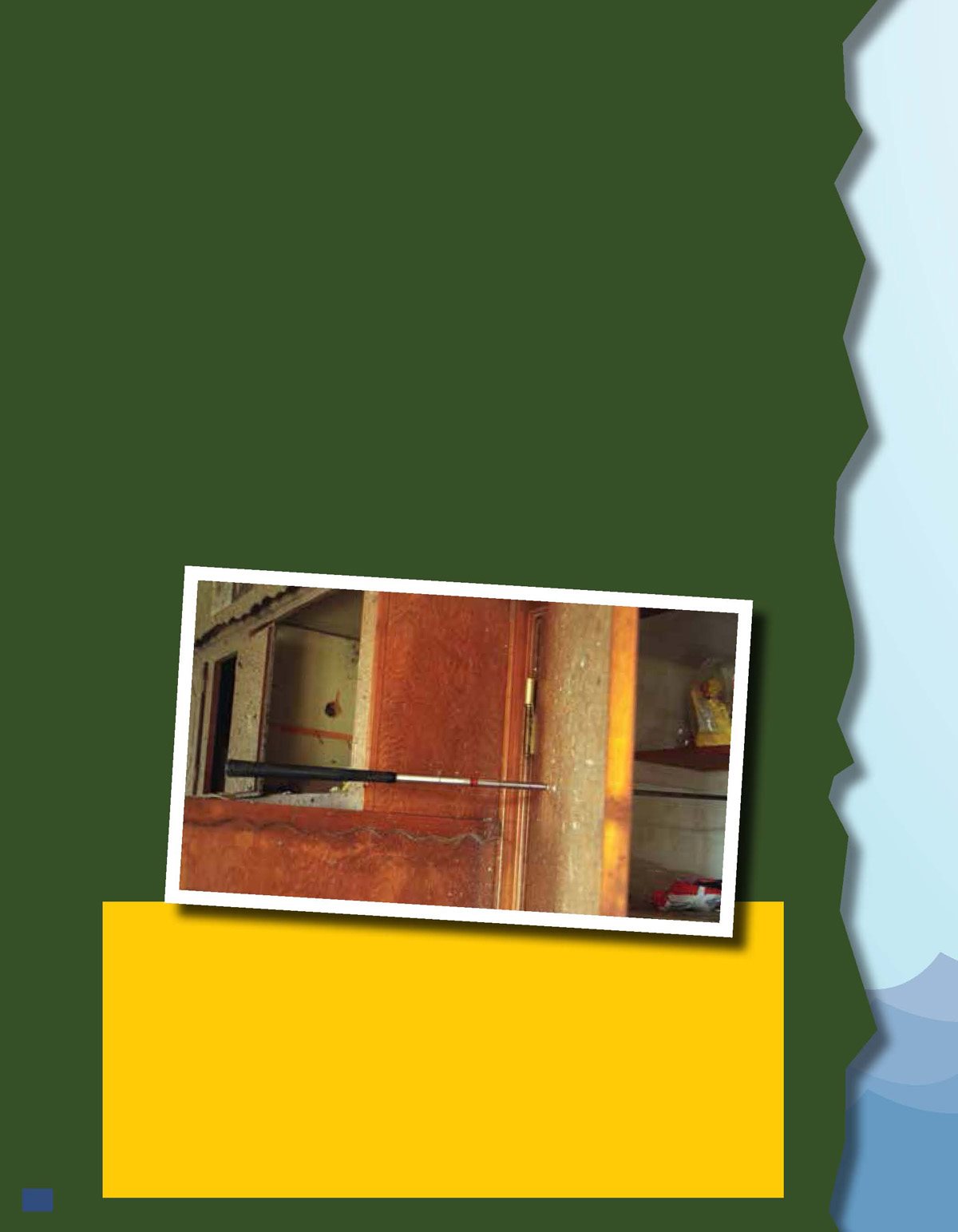William B. Rice
Tornadoes
Publishing Credits
Associate Editors
Creative Director
James Anderson
Lee Aucoin
Torrey Maloof
Illustration Manager
Editorial Director
Timothy J. Bradley
Dona Herweck Rice
Publisher
Editor-in-Chief
Rachelle Cracchiolo, M.S.Ed.
Sharon Coan, M.S.Ed.
Science Consultant
Scot Oschman, Ph.D.
Teacher Created Materials
5301 Oceanus Drive
Huntington Beach, CA 92649-1030
http://www.tcmpub.com
ISBN 978-1-4333-0311-1
ePUB ISBN 978-1-5457-2122-3
2010 by Teacher Created Materials, Inc.
Table of
Contents
Here It Comes!
The sky becomes gray and then nearly black before
it turns a strange, sickly green. The howling wind blows
with a mighty whip. Rain falls in a violent downpour, and
hailstones strike the land. Leaves and debris on the land
are tossed across the ground and into the air. A whirling
gray funnel can be seen, reaching from the sky down to
the ground. It roars like a freight train as it rips across the
land. Branches crack and whole trees uproot. Everything
not tied down is pushed or tossed by the powerful wind.
Even things that are secure are tossed and
hurled. Brick walls may tumble and
windows may shatter. Buildings
may even blow to the ground and
scatter into pieces.
Through the turmoil, sirens
blast and wail. They are the
towns emergency warning.
A tornado is here!
Everyone must run for
cover to a basement or other
safe shelter as soon as the
warning comes. A tornado
can be one of the fiercest and
ost powerful storms of all.
A tornado is transparent.
We see it because it picks
up dust or debris, or a
cloud forms in the funnel.
How Many?
Each year, there are
thousands of tornadoes
around the world.
What Makes
a Tornado?
A tornado is a fast and dangerous spinning column of
air with a downward funnel cloud. The cloud acts like a
vacuum when it touches the ground. It moves across the
ground at speeds of about 50 kilometers (30 miles) per
hour.
Scientists do not know exactly why a tornado forms.
But they do know the weather conditions that make it
happen. They are moisture , heat, and lift .
Most people have seen a thunderstorm. A
thunderstorm is made of thunder and lightning. It
often includes rain, but not always. Tornadoes usually
happen in thunderstorms. Thunderstorms can form into
supercells . A supercell is a very large thunderstorm that
A mother
and child
rotates . To rotate is to spin in a circle.
run to a safe
place.
Stay Put and
Stay Safe
You cannot outrun a tornado,
so it is best to get to a safe
place fast when a tornado is
on the way.
Watch Out!
Tornadoes can occur in
a series, one after the
other. One supercell may
create several tornadoes.
The arrow in this
satellite photo of
a supercell shows
the location of a
new tornado.
A tornado
forms
from a
supercell.
What Is It ?
The atmosphere is the mass of
gases (air) surrounding the Earth,
or another body in space.
A thunderstorm can develop a
The supercell can get tilted
supercell inside it. Winds go up, over,
up and down by
down, and back in a circle.
a strong updraft.
Supercells rotate because of winds. Powerful
winds of different temperatures meet. They
come from different levels of the atmosphere. If
they meet in the right way with enough strength,
they turn the storm like a top. This makes a
strong updraft . The updraft moves the supercell
upward. It becomes a tornado when this rotating
storm reaches its funnel to the ground. It can
suck up wind and everything else it meets into the
cell, as a vacuum would.
How Big
and How Fast?
Tornadoes are usually less than
500 meters (1,640 feet) wide.
They can be as wide as 1.5
kilometers (.9 miles). Winds can
move up to about 500 kilometers
(more than 300 miles) per hour.
Tornadoes usually last just a few
minutes, but they can last more
than an hour.
If the vertical supercell keeps going,
it starts sucking wind and everything
else up the cell. A tornado is born.
But what exactly makes the winds in the first place?
The sun is the cause. The sun heats the Earth, but
everything is not heated evenly. The warmer the ground,
the more it heats the air above it. This warm air rises. As it
rises, cooler air floods below it. If the warm air rises quickly,
the cooler air rushes in quickly, too. This is the wind.
As the warm air rises, it begins to cool. When it cools,
it falls. Then it rushes in to take the place of warm air that
is rising. In this way, the cycle of wind continues. It may be
that the cycle creates only a gentle breeze. But it may also
create a fierce and powerful tornado.
Thats Powerful!
A tornados winds are so strong that they can drive a
piece of straw into wood as though it were a nail. It can
also drive wood into metal. In this image, a golf club has


